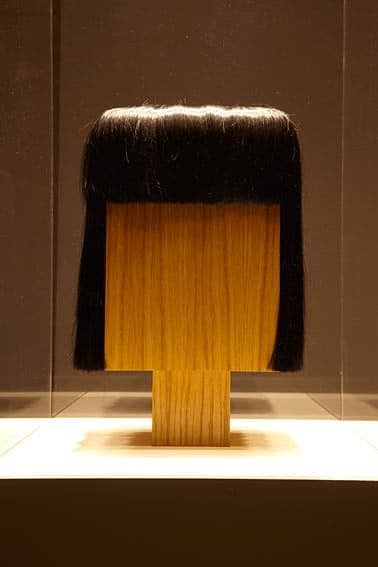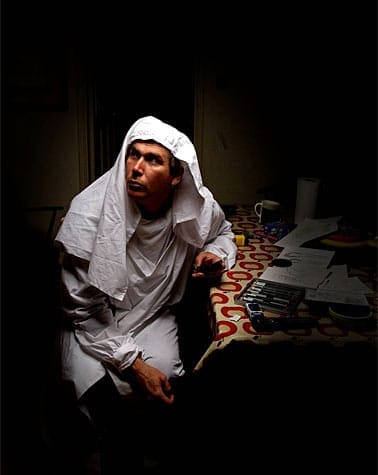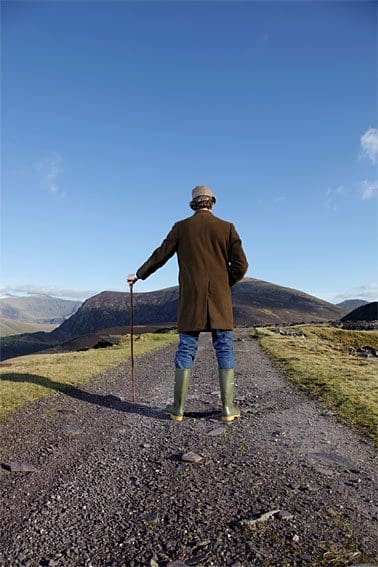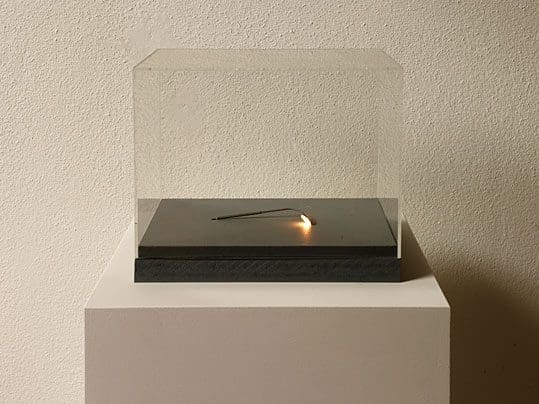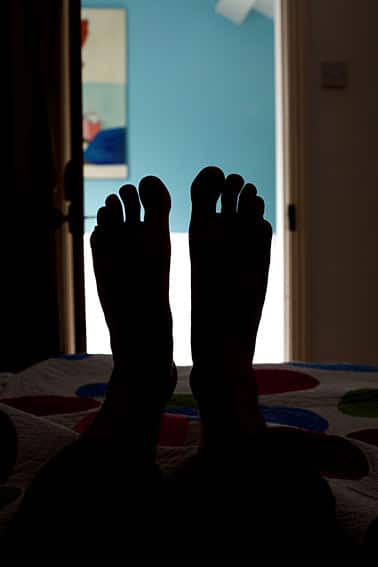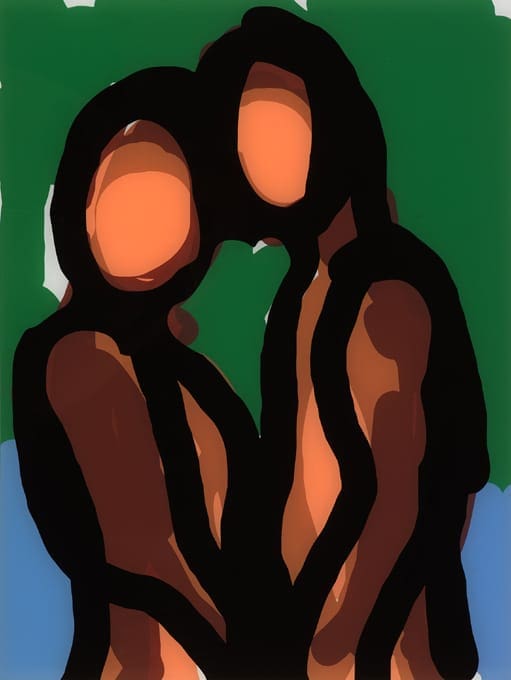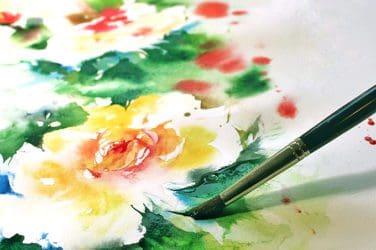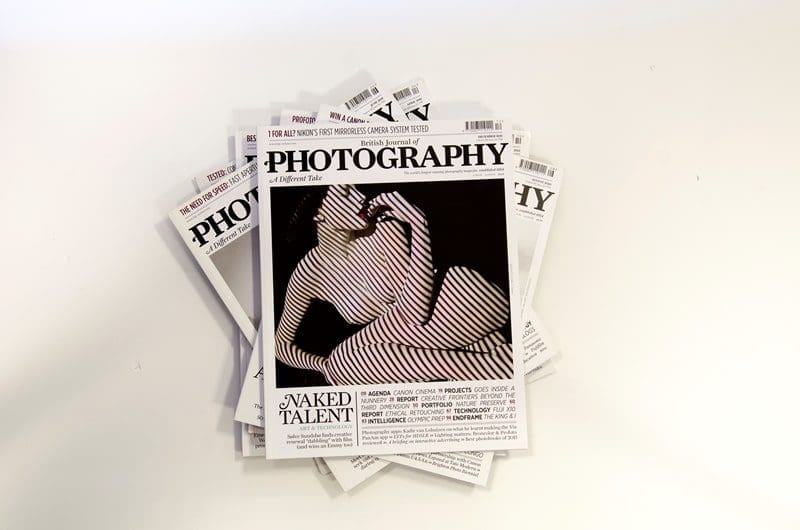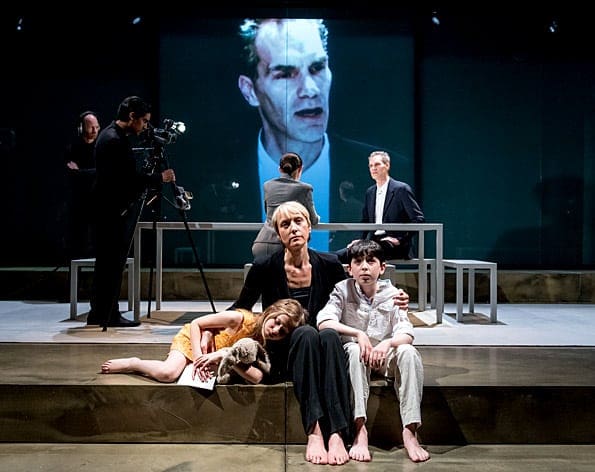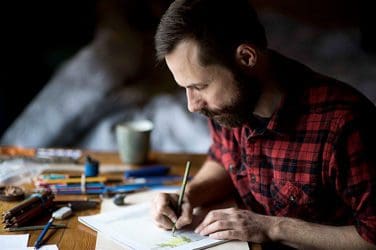Bedwyr Williams, Wales in Venice representative at the 2013 Venice Biennale, on Colin Farrell, Comedy and Clarkes shoes.
“Sorry I missed your call,” says Bedwyr Williams, picking me up from Bangor station like an art taxi service, “I was on the other phone arguing with a woman from Clark’s shoes. I told her: ‘Go to your website, select Size 13 shoes, and tell me what you see isn’t depressing.’”
The world just wasn’t made for his clown-footed kind. Bedwyr Williams represents Wales in this year’s Venice Biennale – it’s a good call. He characterises the Welsh sense of humour as “dark, gallows and toilet.” Added together, you get Bedwyr Williams artist, the giggling goth, all big feet and weird teeth, wry about being awry. By far the funniest things in his very funny art books are the comments added later in the margins, undermining what he originally said. In the spirit of that, I have offered him this article to annotate.
My interview preparation involved writing a list of serious questions and a list of silly ones, just in case. Within five minutes of meeting Bedwyr, while he lays into Colin Farrell [I wish I’d never mentioned him] as the embodiment of everything wrong with the world, I know I can break out the silly ones. “He has twice as many hair follicles as a normal human being,” he says, mischievous eyes flashing, “I wish I could keep him back a year in school. Stop him for a while.”
When we finally get to the bottom of it, it’s a question of size. “What’s the perfect height?” I ask, from the silly list. Without pausing, Bedwyr answers “five foot eleven,” as if he’s given it considerable thought. I can sympathise, being 6’2 to Bedwyr’s 6’4, with size 11 feet. He describes the trauma of seeing Peter Crouch dancing like a freaky marionette and before long we’re swapping height horror stories from our childhoods like a Giants Anonymous meeting. Then I nearly brain myself [think about what this actually means ‘brain’ – ouch] on a low-hanging doorframe as he leads me to his Rhostryfan studio, causing a cartoon bump for the next week. I wonder if this is his experience of the world too- doors he keeps banging his bonce on, while Colin Farrell types swagger through unharmed.
Or perhaps he’s grown into his height? “No, I still think I look daft,” he replies. Bedwyr doesn’t fit anywhere: not in the London-based art world, and not in the world of comedy (“People that go to comedy clubs are fucking weird, like people who go to amusements parks.”). His favourite comedian is Peter Cooke, another lumbering lummox who made a career out of discomfort. And like Cooke, Williams is bloody funny. On the train home I have to stop reading his book of transcripts (“Bedwyr, I Think I Missed Your Performance”) because I’m snorting with laughter.
Predictably, he gets called a comedian and expected to make people laugh, “like I’m some Timmy Mallett fucker.” [A friend of mine was once asked by Timmy to photograph him in a London park] I suggest the main difference between comedy and art is hecklers. “They’re still there,” he says, “they just take longer to mouth off.” Slow-release, like a suppository. “Though, with the art crowd,” he qualifies, “if you make someone laugh they lose a bit of control.” Bedwyr has become puppet-master of his own gangly [I used to be called lanky which is a horrible word] frame.
There’s something godlike about artists, a power he first felt looming over the ‘miniature green world’ of model railways, watching seemingly meek ‘mini-Brunels’ [a nice thought – kids with top hats] lording their passive-aggression over microcosms. His next act as megalomaniac was to advertise fake lectures at Central St Martins and see who arrived (“I chose random subjects like ‘The Danube’- people always came.”). This dedication to confounding expectation has become a driving force, reaching heady heights this year when he forced punters to become moles for his pre-Biennale pitch, Bedwyr Williams and the Starry Messenger. As he explains: “Moles are blind and easily led. That’s how I like my audiences.” For someone suffering the injustices of being too big, it must be good to make people feel small.
His childhood nightmares about “rapid leaps in scale and focus” will be revisited on the Biennale audience, who’ll pass beneath a giant coffee table, dwarfed by constellations of mundane objects. “Midgets just aren’t small enough, are they?” I joke at one point. “No,” he says with relish, “I’d love to see a man the size of that coffee mug.” [ I wish I hadn’t said this] He mentions liking Will Self’s scale-defying stories and it seems to me that he’s the yang to Self’s yin – the excitable child to his morose teenager.
This childlike wonder drives his practice. He bought a telescope for the Biennale and aimed it at the moon: “I found it a really moving experience – there’s nothing else closer.” At the start of the interview, he sets up his son beside us with a laptop and headphones, and soon Bedwyr’s answers trail off as he disappears into the Welsh cartoons. “I’m very suggestible,” he tells me, “I’m the guy who’s really easy to flog stuff to down the market.” To prove it, he shows me a ‘beer bong’ [I didn’t buy a beer bong I just saw one in a shop just to be clear] he’s bought, with loads of rubber tubes. “This idea will never take off! Imagine having to clean it. Where would you keep it in your kitchen? It’s destined to be sticky and shit.”
A Welsh bannerman, Bedwyr reminds me of Gruff Rhys – both are punky, prolific and have a current Italy-based project (Neon Neon’s new album is about an Italian Communist). For The Starry Messenger, Bedwyr collaborated with Super Furries producer Gorwel Owen, commissioning him to recreate “that sound when you’ve been in the house all evening and you go out at midnight…” He’s also going to record a friend weeping [asking a man to cry on cue is difficult] (“I haven’t asked him yet,” Bedwyr says sheepishly. “I don’t know how he’s going to take it.”)
Stargazing is emotional escapism from Earth’s cramped confines – Bedwyr is like a plant that needs repotting. “Since I’ve been tweeting,” he tells me at one point, “I’ve noticed my thoughts have started to shrink to fit the word limit.” It makes sense that if you don’t fit the world you’re given, you make up your own. His 2004 show Tyranny of the Meek (would their motto be ‘I came, I saw, I concurred’?) was vengeance for ill-treatment at the hands of macho pool players, gatekeepers of the function room where the railway hobbyists met. The show featured a model train passing through a dystopia of splintered snooker cues and ripped baize, a mild-mannered revenge fantasy.
Like all good artists, Bedwyr is a natural storyteller. His tale of running the pool player gauntlet gets better with each telling. By now, it’s positively mythical. Unlike the English, who settle for soap melodrama, the Welsh are brought up a diet of homegrown legend. “We all read the Mabinogian at school,” Bedwyr tells me; unsurprisingly, his favourite myths are “the ones about impossible shapeshifting.” This is an artist whose performance personas include the Grim Reaper, a druidic bard, and a cake coroner.
Bedwyr’s work applies an epic scale to awkwardness, driven by an ambition lacking from other ‘comic’ artists like Turner nominee David Shrigley. He deserves a much bigger, Arts Council branded plant pot to stand in alongside the best artists Britain has to offer. Plus, if he ever becomes famous we can expect a perfume range called ‘Tyranny of the Meek’ and a sex tape called ‘Untitled.’

